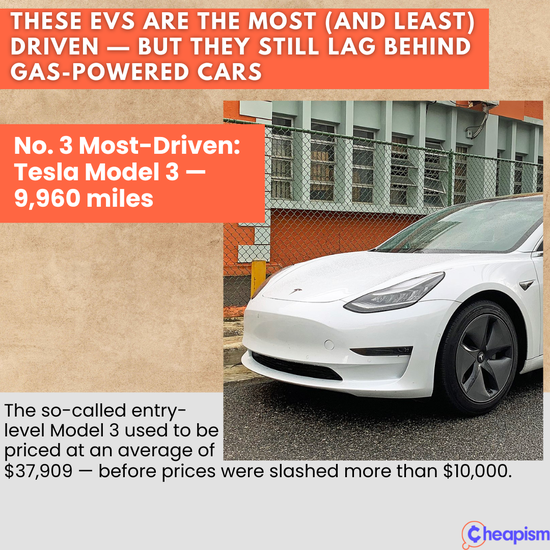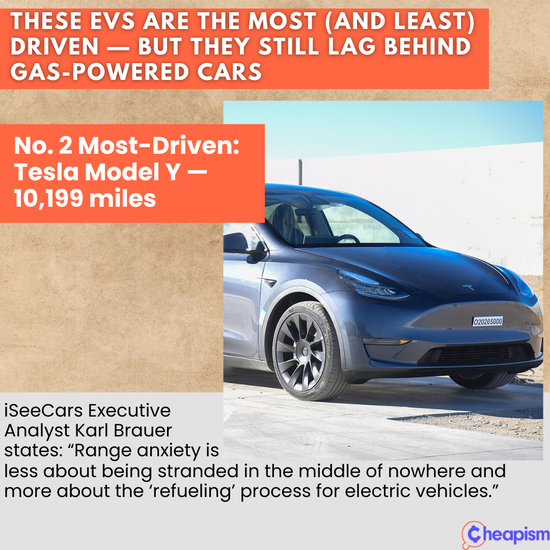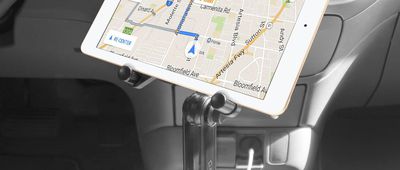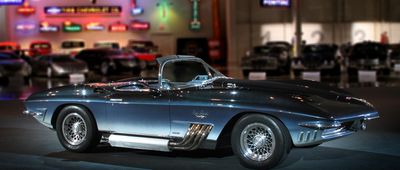EVs are becoming a more popular choice, but even though people like owning them, they don’t drive them as much, according to a recent study by ISeeCars. Blame the fact that even if an EV driver can charge at home, hitting the road may mean a charging station is far away or unavailable — or just a huge time suck. “Range anxiety continues to impact how consumers utilize their EVs,” says SeeCars Executive Analyst Karl Brauer.
These EVs Are the Most (and Least) Driven — But They Still Lag Behind Gas-Powered Cars

sanfel/istockphoto
Cheapism is editorially independent. We may earn a commission if you buy through links on our site.
Tesla Model S
The Model S might rack up a respectably amount of miles in three years, but the ride doesn’t come cheap. The car costs around $66K new. On the bright side, it has an average battery life of 378 miles, the highest on this list.
Tesla Model 3
Range anxiety isn’t the only reason EVs stay in the garage (the Model 3 has an average range of 279 miles). “Several factors contribute to EVs being driven less, including their common role as a second or third vehicle in a household, and being used less often for road trips,” says Brauer.
Tesla Model Y
While filling up at the gas station can be a chore, recharging an EV can be a much bigger slog. Fully recharging an electric vehicle can take up to 30 minutes with fast charging, and multiple hours without. Still, range anxiety may not be based in reality (especially since a Model Y gets an average 316 miles on a full charge). According to the Department of Transportation, the average car trip is only 9.5 miles and 95% of car trips are 30.9 miles or less. Only 1% of car trips are more than 89.4 miles long.
Tesla Model X
The top four most-driven EVs — all Teslas — boost the average of EV miles driven by a lot. “Without Tesla, the average miles per year for EV drivers would drop from 9,059 to 6,719,” notes Bauer.
Porsche Taycan
While EVs from Chevrolet, Kia, Audi, Nissan, and Jaguar all made a showing between the Teslas and the Taycan, this pricey EV came in dead last. Notably, it doesn’t have a very high battery range, with an average of 226 miles. “It’s interesting to see the Porsche Taycan, a direct competitor to the Model S, being the least-driven electric car,” says Bauer.
Three-Year Average for EVs — 9,059 miles
Although the top four EV vehicles are above the EV average, none of them comes close to the gas-powered vehicle average. Amazingly, electric cars cost 47% more than conventional vehicles, but are driven less.














